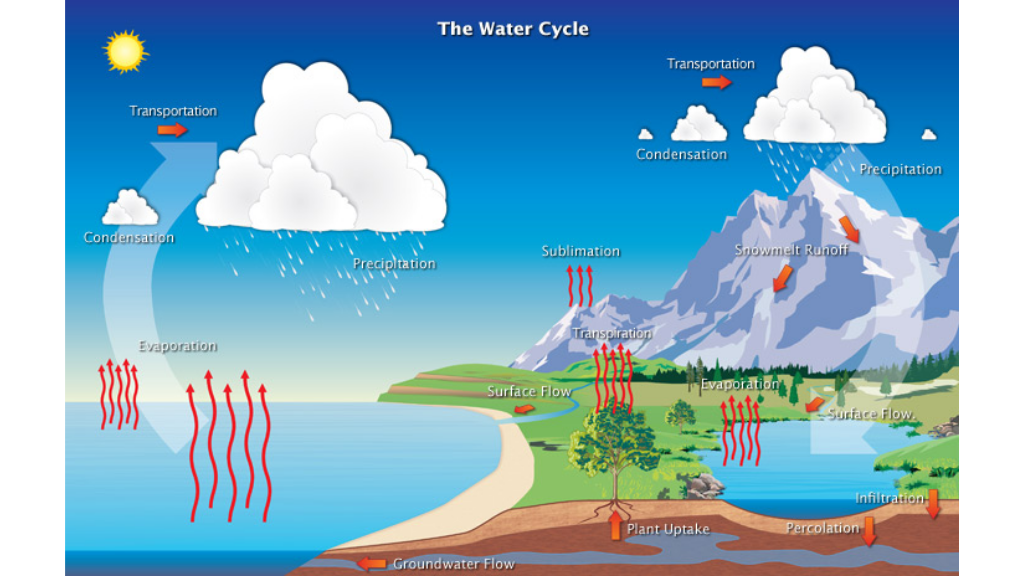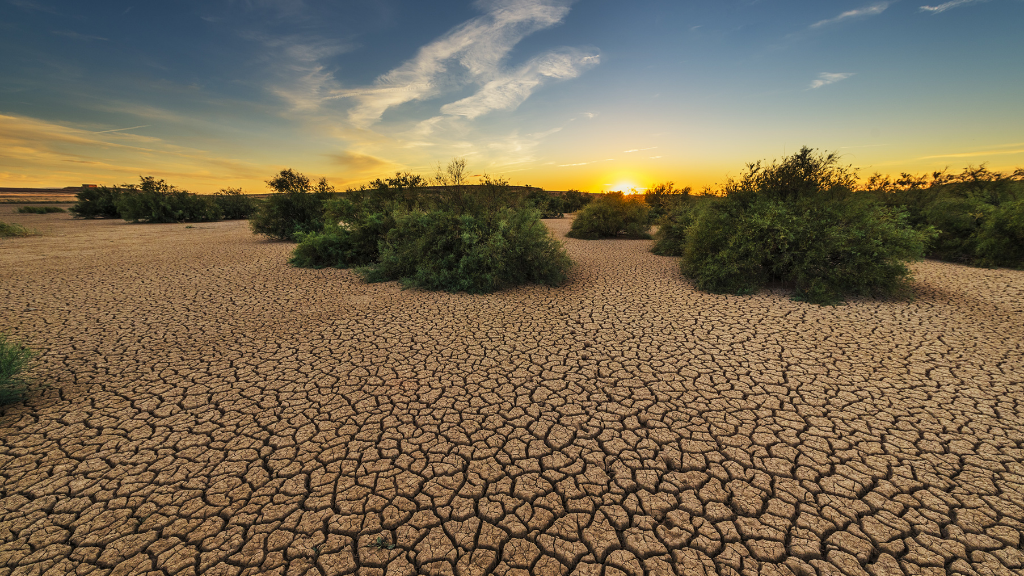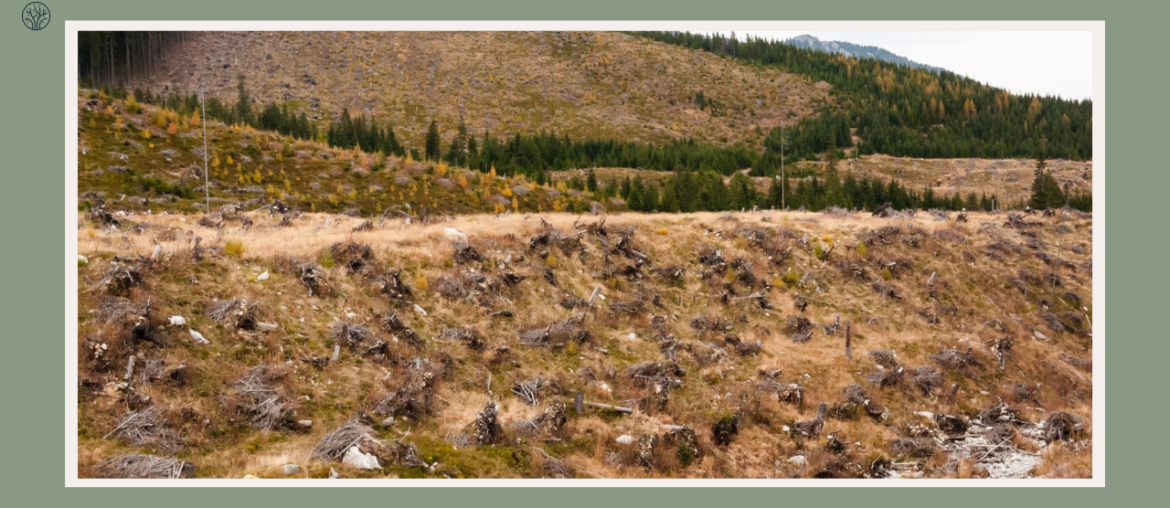Deforestation has cast a long, ominous shadow over our environment. Beyond its well-documented effects on biodiversity and climate, it also has a strong influence on the water cycle, a phenomenon often underestimated but never to be overlooked. In this article, we will answer the question “How does deforestation affect the water cycle?” and explore the unique roles that trees play in this planetary process.
Roles Of Trees In The Water Cycle
The Process Of Transpiration In Trees
Picture a vast, dense forest, each tree standing tall and proud. They are not just passive observers of their surroundings; they are active participants in the grand theater of the water cycle. Transpiration, often referred to as the ‘sweating’ of trees, is a captivating phenomenon.

During transpiration, trees release water vapor into the atmosphere through tiny openings in their leaves. This process serves 2 purposes: regulating the tree’s internal temperature and adding moisture to the air. This is why forests are also called nature’s largest air conditioning system. As this water vapor ascends, it contributes to the overall moisture content of the atmosphere.
A single healthy large tree can transpire hundreds of gallons of water in a single day, adding a significant amount of moisture to the air. Imagine the impact of a forest full of these natural humidifiers!
How Trees Act As Natural Water Reservoirs
Now, let’s dive into the lesser-known role of trees – natural water reservoirs. Trees are remarkable at storing water, much like the canteen you carry on a long hike.
Their roots go deep into the ground, accessing groundwater and preventing it from simply running off the surface. In times of excessive rain, trees soak up this water, acting as a natural sponge. They then release it slowly over time, replenishing nearby streams and aquifers.
This groundwater storage system not only prevents flooding but also ensures a steady supply of fresh water during dry spells.
The Connection Between Trees And Cloud Formation
In their transpiration process, trees release water vapor, the vapor then rises into the sky and, as it ascends, cools and condenses into tiny water droplets, forming clouds. These clouds, in turn, bring rainfall that waters the trees, and then the cycle continues.
If we let deforestation further disrupt this natural symphony, the consequence is decreased cloud cover and, inevitably, reduced rainfall. Such interference could lead to devastating droughts and long-lasting dry spells.
In the water cycle, trees are one of the most important factors. They maintain the balance between water in the soil, in the atmosphere, and in our rivers. But what happens when this natural harmony is disrupted?
How Does Deforestation Affect The Water Cycle
Disruption of Evaporation Levels and Atmospheric Moisture
Deforestation triggers a domino effect in the water cycle. One of the initial impacts is the disruption of evaporation levels and atmospheric moisture.
In a forest, transpiration, as we explored earlier, adds significant moisture to the air. This moisture plays a crucial role in maintaining humidity levels and cloud formation. But with the removal of trees, transpiration rates plummet. The result? The atmosphere loses a significant source of moisture, leading to decreased humidity. This, in turn, affects the formation of clouds, and as we know, clouds are the heralds of rainfall as well as the temperature of the planet.
The Onset of Drought-Prone, Desert-Like Climates
Imagine a world where forests once thrived but now all that are left are barren deserts. Though far-fetched, this transformation is closer than it may seem.

Deforestation disrupts the balance of the water cycle. Reduced tree cover results in less moisture returning to the ground and the atmosphere. As a consequence, many areas are at risk of turning into barren deserts, also known as desertification. Regions that were once lush can gradually turn into arid landscapes.
The Consequences Of Reduced Infiltration And Increased Runoff
Tree Roots vs Soil Erosion
In a forest, the ground is a tapestry of interconnected roots, holding the soil together and preventing erosion. But when trees are cut down, these intricate networks vanish.
Tree roots, with their density and depth, anchor the soil and absorb water, slowing it down as it penetrates into the earth. Without these roots, the soil becomes vulnerable to erosion, particularly in areas with heavy rainfall. This erosion results in the loss of fertile topsoil, a precious resource for agriculture.
The Threat Of Flooding And Water Contamination
Deforestation doesn’t just disrupt the flow of water into the ground; it also has a profound effect on surface water.
As trees vanish, the land loses its capacity to absorb rainwater. This leads to an increase in surface runoff, sending water cascading into rivers and streams at a rapid pace. The consequences can be dire – flooding, which damages homes, infrastructure, and livelihoods. Moreover, this rapid runoff can carry pollutants from roads and fields into water bodies, contaminating them.
Deforestation On Water Distribution
Water distribution refers to how water is allocated among different users and regions. Deforestation can create conflicts and inequalities in water distribution by affecting the availability and accessibility of water resources.
The ” River in the Sky” Phenomenon And Its Importance
One of the ways that deforestation affects water distribution is by disrupting the “river in the sky” phenomenon. This phenomenon refers to the atmospheric rivers that transport large amounts of water vapor from the tropics to higher latitudes. These rivers are like rivers in the sky that flow in narrow bands across the atmosphere. When they encounter mountains or coasts, they release their water as rain or snow.

Atmospheric rivers are important for providing fresh water to many regions around the world. For example, atmospheric rivers supply about 50% of California’s annual precipitation. They also help extinguish wildfires and replenish snowpacks. However, atmospheric rivers can also cause extreme rainfall and floods when they are too strong or persistent.
Deforestation can affect atmospheric rivers by changing their frequency, intensity, and location. For instance, deforestation in the Amazon rainforest can reduce the moisture that feeds the atmospheric rivers that flow toward South America’s west coast. This can reduce rainfall and snowfall in the Andes Mountains, which are crucial for supplying water to millions of people downstream.
How Deforestation Affects Rainfall in Distant Regions
Another way that deforestation affects water distribution is by altering rainfall patterns in distant regions. This is because deforestation can affect global climate by changing the albedo, or reflectivity, of the land surface.
When forests are replaced by crops or pastures, more solar radiation is reflected back to space. This reduces the amount of heat that is trapped by the atmosphere and cools the Earth’s surface. This can affect atmospheric circulation patterns that determine where rain falls on Earth. For example, deforestation in Africa can reduce rainfall in North America by weakening the trade winds that carry moisture across the Atlantic Ocean.
FAQ
How does the Amazon rainforest influence the water cycle?
The Amazon rainforest is one of the largest and most biodiverse ecosystems on Earth. It covers about 5.5 million square kilometers (2.1 million square miles) of land in South America. The Amazon rainforest influences the water cycle in several ways:
- Produces 20% of the world’s oxygen through photosynthesis.
- Stores 17% of the world’s terrestrial carbon in its biomass.
- Recycles 50% of its own rainfall through transpiration.
- Generates 10% of the world’s freshwater runoff into rivers and oceans.
- Affects regional and global climate by regulating temperature, humidity, and precipitation patterns.
Unfortunately, the Amazon is under destructive deforestation that is slowly taking away our beautiful forest.
How does deforestation affect the water quality of a river?
When trees are removed from riverbanks, the soil they once held together is left exposed. This can lead to increased sedimentation in rivers, making the water polluted and less suitable for drinking, agriculture, or aquatic life. Moreover, the runoff from deforested areas can carry pollutants like pesticides and fertilizers into water bodies, further compromising water quality.
What is the connection between deforestation and the carbon cycle?
Deforestation disrupts the carbon cycle by shifting the balance between carbon sources and sinks. Forests, as significant carbon sinks, store carbon in biomass and soil. When deforested, they release carbon into the atmosphere as CO2, a greenhouse gas contributing to global warming. Deforestation also impairs the forests’ ability to absorb CO2, making it a major contributor to greenhouse gas emissions and a threat to biodiversity and ecosystem services. Reducing deforestation is vital for mitigating climate change and conserving nature.









